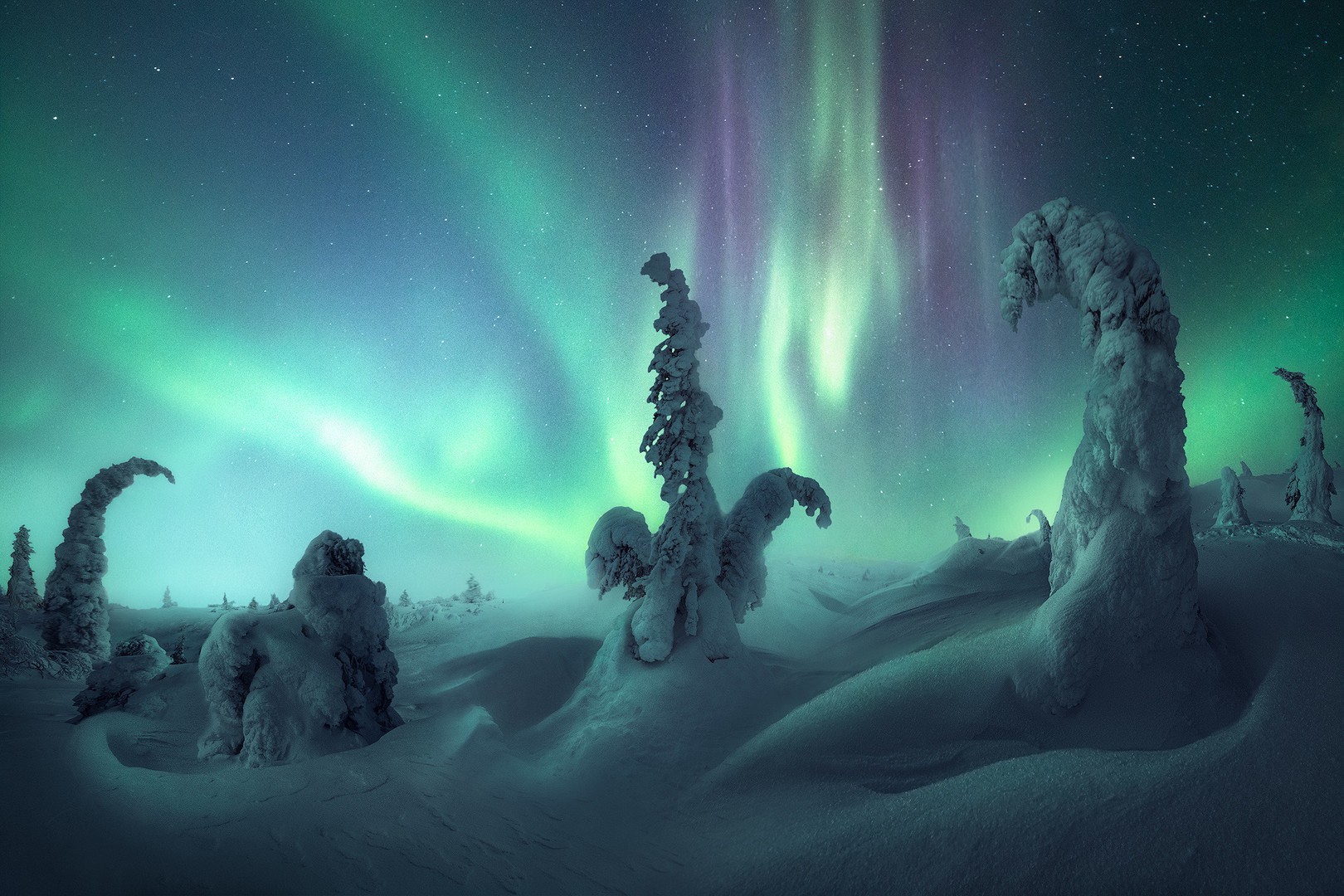Travel photography blog Capture the Atlas has published the fifth edition of their annual Northern Lights Photographer of the Year competition. The collection features the 25 best aurora images of 2022 captured in countries including the U.S., Canada, Finland, Norway, Denmark, Iceland, Russia, Greenland, and New Zealand.
The selection is an attempt to serve as inspiration to other photographers, as well as to maintain general interest in these breathtaking natural light displays that are visible at night near the Arctic Circle during winter.
Videos by VICE
This year’s list highlights the images of 25 photographers of 13 different nationalities. The annual feature is published in early December to coincide with the northern lights or aurora season and the end of year.
Winter in the Arctic usually runs from late September to early April. As the sky is dark enough for the northern lights or aurora borealis to be visible under the right circumstances, this period is known as the northern lights season. The best time to see and photograph the lights is during the autumnal equinox (September 22 or 23) and the vernal equinox (March 20 or 21), as the aurora is at its most active, because of an increase in solar wind activity.
The term “aurora borealis” is said to have been coined by Galileo Galilei in 1619 AD after Aurora, the goddess of dawn in Roman mythology, and Boreas, a personification of the north wind and bringer of cold winter air, considered a minor god in Greek mythology. Galilei incorrectly assumed that the lights he saw were because of sunlight reflecting from the atmosphere.
Regarded as the Holy Grail of skywatching, the atmospheric phenomenon is a result of electrically charged particles from space entering the Earth’s upper atmosphere at very high speeds. According to online publication Space.com, “The science behind the northern lights wasn’t theorized until the turn of the 20th century. Norwegian scientist Kristian Birkeland proposed that electrons emitted from sunspots produced the atmospheric lights after being guided toward the poles by Earth’s magnetic field.”
A sky illuminated by an aurora can be a moving experience, which is likely why seeing the lights in person features on the bucket list of travellers and stargazers alike. The vibrant colour palette is usually green and blue, but can sometimes also appear pink and violet.
Nico Rinaldi, one of the photographers whose image Polaris Dream taken in Murmansk Oblast, Russia features in the collection, had dreamt about photographing the landscapes of northern Russia for a long time. “You feel like you’re in the realm of snow monsters, in a landscape where the mountains and trees are dominated by ice and snow,” he said in the press release. “That night, the northern lights put on an incredible show.”

Capturing the northern lights can be challenging, even for seasoned photographers. “When the northern lights go crazy in the night sky, focusing on your composition is worth the utmost effort because there is so much happening so quickly,” shared photographer Tor-Ivar Næes, whose image Auroraverse was taken in Nordreisa, Norway.

Check out more stunning images from the winning collection here.








Follow Shreya Sharma on Twitter.






